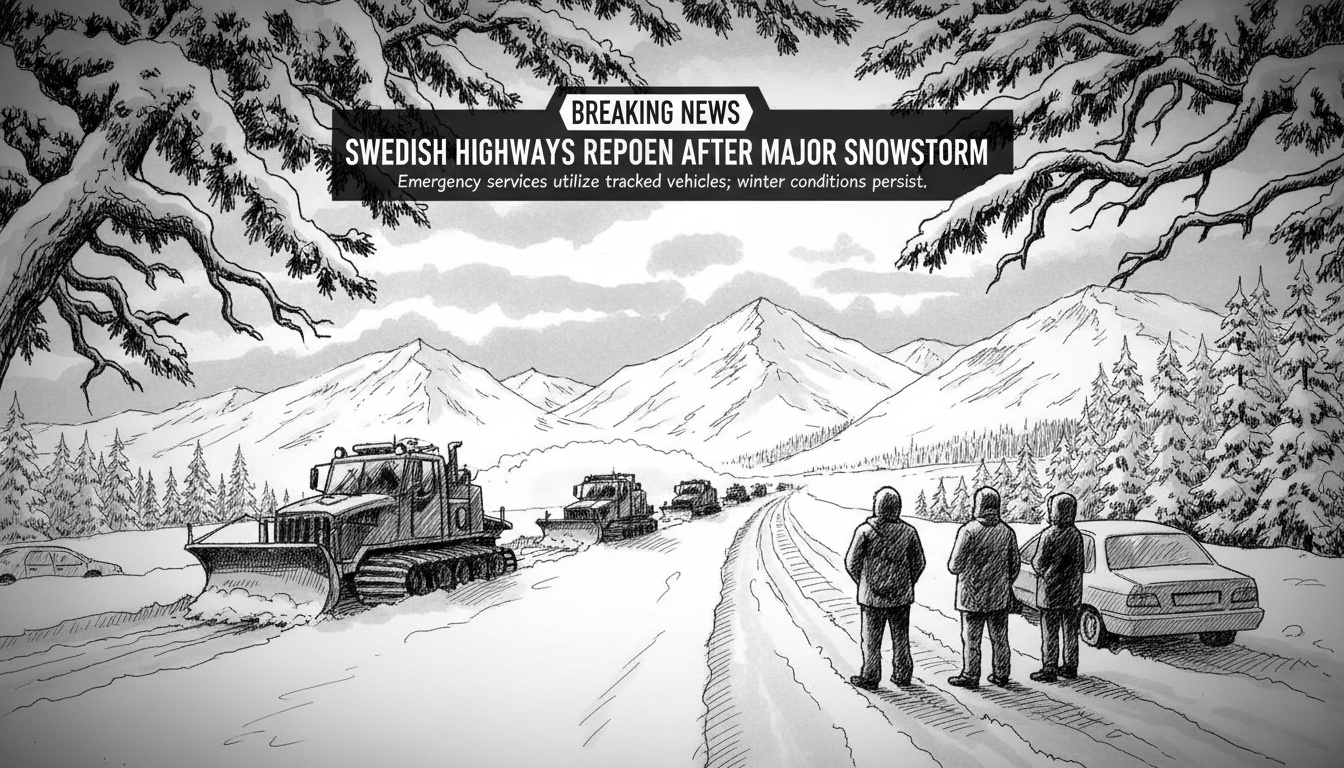Southern Sweden's transportation network has returned to normal operations after a severe snowstorm paralyzed major highways. The E6 and E22 motorways, critical transport arteries connecting Sweden with Denmark and Norway, have fully reopened to traffic following Thursday's unexpected heavy snowfall that stranded hundreds of motorists for hours.
Road conditions improved significantly overnight, with all major routes becoming passable by Friday morning. Traffic Authority press communicator Sara Lindström confirmed the situation had stabilized. "The roads are accessible again," she said in a statement. "We still have snow and slippery conditions, but no vehicles remain stuck."
The storm's intensity caught authorities by surprise, with snowfall exceeding meteorological predictions. The Swedish Meteorological Institute had issued both yellow and orange warnings for southern Sweden during the worst of the weather conditions. These warnings remained in effect until 4 AM Friday when the final snow alert was lifted.
Emergency services deployed tracked vehicles to rescue stranded motorists along the E6 near Landskrona. Many travelers faced difficult decisions during the prolonged standstill. Roxy Knudsen, one of the affected motorists, described how people abandoned buses and continued on foot after waiting for over four hours. "Many people didn't have water," she explained, noting she traveled with her dog in the vehicle.
Authorities reported that despite offering evacuation assistance, all stranded motorists chose to remain in their vehicles. Rescue teams instead distributed blankets, water, and provided reassurance to those waiting for conditions to improve. The Traffic Authority had elevated its preparedness level during the challenging situation.
This incident highlights Sweden's ongoing challenges with winter weather preparedness despite the country's extensive experience with snow management. The sudden road closures demonstrate how quickly conditions can deteriorate even in nations accustomed to harsh winters. Similar weather-related disruptions occurred during the 2021-2022 winter season when heavy snowfalls caused comparable traffic chaos in the same region.
International travelers and expats in Sweden should note that while infrastructure generally handles winter conditions well, unexpected weather patterns can still create significant travel disruptions. The country's highway system, particularly the E6 corridor connecting Malmö to Gothenburg, remains vulnerable to sudden weather changes despite advanced forecasting and preparation systems.
The Traffic Authority continues to advise caution as winter road conditions persist across southern Sweden. Motorists should prepare for potential delays during winter travel, carrying emergency supplies including water, blankets, and necessary medications when journeying during adverse weather conditions.

